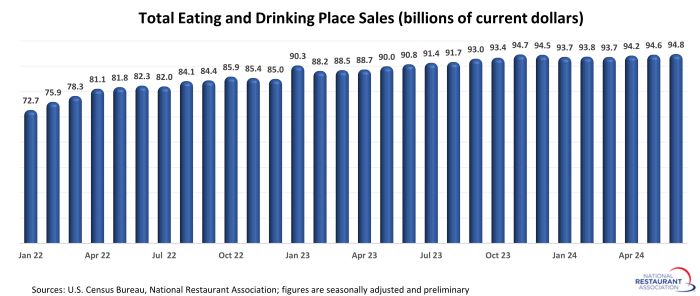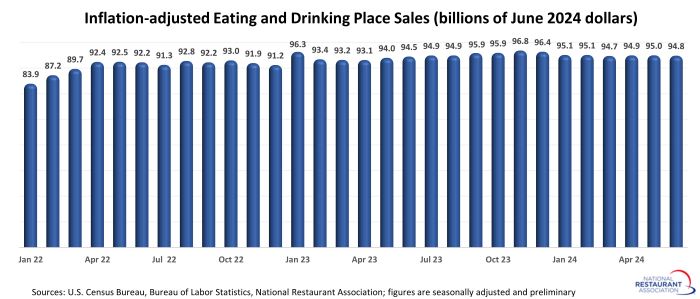Total restaurant industry sales
Restaurant sales rose for the third straight month
Eating and drinking places* registered total sales of $94.8 billion on a seasonally adjusted basis in June, according to preliminary data from the U.S. Census Bureau. That was up 0.3% from May and represented the third consecutive monthly sales gain, after May’s preliminary reading was revised significantly higher.
While the trendline during the first half of 2024 was only modestly positive, the revised data paint a much more positive picture than was originally reported last month. Coupled with the continued resiliency of the labor market, this makes it likely that consumers will bend but not break during the second half of the year.

The recent uptick in restaurant sales was primarily driven by rising menu prices. As a result, real eating and drinking place sales were essentially flat during the first half of 2024, after adjusting for menu price inflation. Overall, June’s sales volume of $94.8 billion was a full $2 billion below the November 2023 peak, in inflation-adjusted terms.

*Eating and drinking places are the primary component of the U.S. restaurant and foodservice industry and represent approximately 75% of total restaurant and foodservice sales. Monthly sales figures presented above represent total revenues at all eating and drinking place establishments. This differs from the National Restaurant Association’s sales projections, which represent food and beverage sales at establishments with payroll employees.
Track more economic indicators and read more analysis and commentary from the Association's economists, including the latest outlook for consumers and the economy.